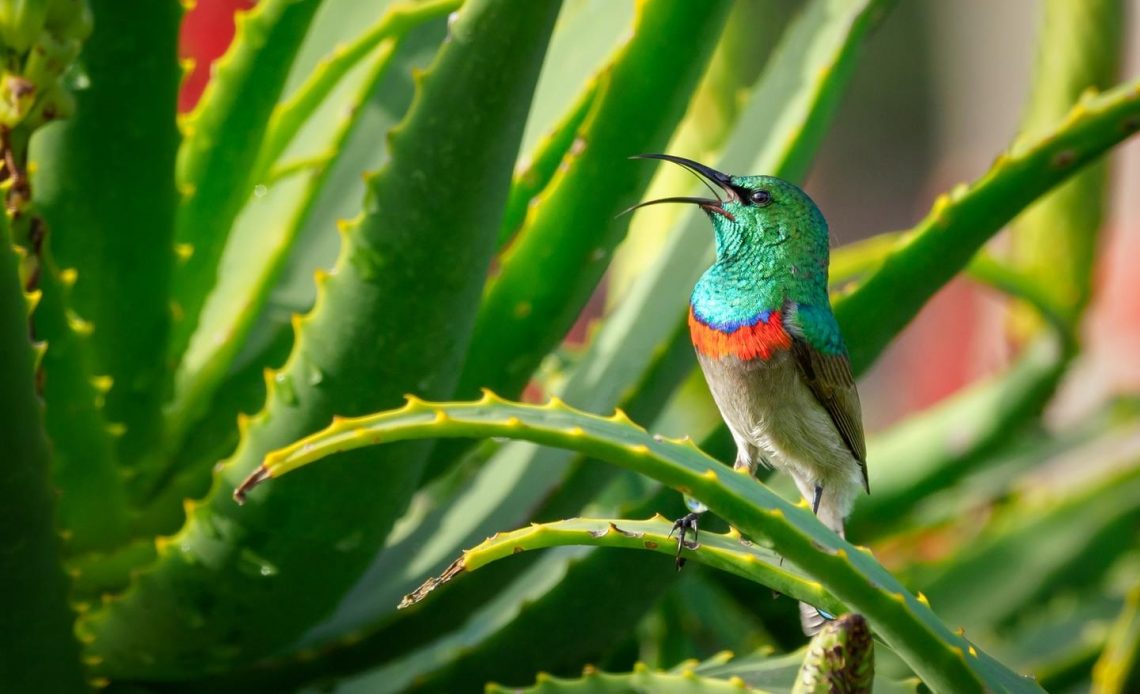

We’re here to help! Wild Yards is a completely free website that is 100% dedicated to helping you create a wildlife-friendly, sustainable yard. Read more
WildYards is reader-supported. When you buy a product through a link on our site, we may earn a comission. Every product is independently selected by our (obsessive) editors and our reviews are unbiased and objective. Read more about our mission or our privacy policy.
Hummingbirds can help to make any backyard more colorful and pleasant to behold. As it happens, they are easy to attract with a variety of different tropical plants, shrubs and flowers. But are there any succulents that attract hummingbirds?
Yes – there are many different types of succulent flowers that will attract hummingbirds to your garden or backyard! From aloe vera to aeoniums, it’s easy to grow large, colorful and easily accessible flowers that these spectacular birds adore.
Keep reading, and we’ll share with you some fantastic succulents hummingbirds love to feed from across the seasons.
What is a succulent plant?
A succulent plant is one that is extremely hardy and adaptable. The average succulent will store large reserves of water in its stems and leaves. This means that, even during periods of drought, a perennial succulent can be easy to spot all year round.
Of course, succulent species vary, and in fact, there is some disagreement over how they should be determined. Experts suggest that there may be more than 150 different types of succulent plant. Therefore, if you are considering attracting hummingbirds to your garden, you have an array of choices.
Succulent plants, much like any other plant, thrive with regular, direct sunlight. You can keep them inside and outside as you desire. However, it is normally a good idea to try and provide your succulents with between seven and eight sunlight hours each day.
Watering and feeding a succulent can be less intensive thanks to their incredible reserves. However, it does still pay to be careful with under-watering these growths. Consistency is key – and a healthy succulent is easy to spot as it will normally have thick, green leaves. However, there are exceptions to the rule. Did you know that the cactus is technically a succulent?
It’s therefore a good idea to follow a feeding and watering plan for your specific succulents – especially if you wish to welcome hummingbirds into your backyard during the sunnier months. Hummingbirds like many succulent flowers for their colors, scents, and their shapes. The more tubular the flower shape, the easier it is for a hummingbird to feed on the nectar within.
6 Succulent Plants Hummingbirds Love
While there are many different succulents out there, here is a selection of blooms hummingbirds are guaranteed to flock to.
Echeveria
The echeveria is a striking succulent plant best known for a look that’s halfway between a rose and a cactus! This thick, super-hardy plant persists and blooms in both pots and in suitable beds, and gardeners love them for their vivid range of colors.
You’ll find that echeveria love warmer climates and are actually considered desert plants – they will not need much watering, but are happy to withstand some downpours. You’ll actually find them propagating across Texas in the wild. These succulents sprout bright, sunny blooms that hummingbirds are naturally attracted to.
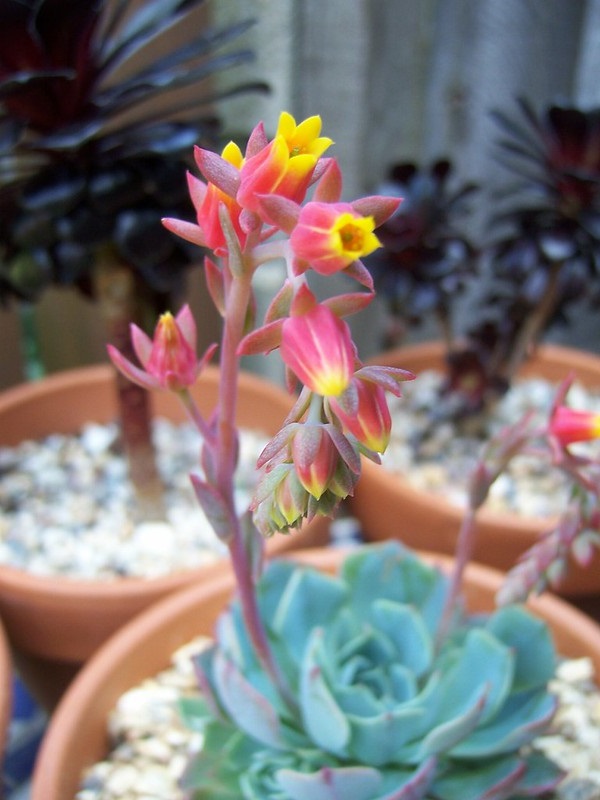
Gasteria
The gasteria, unlike the echeveria, is actually native to South Africa. However, like the above succulent, this plant is found in dry, rocky conditions, and they often propagate deep in other species of undergrowth.
The gasteria is highly popular with the hummingbirds largely thanks to its accessible flower entrance. Often sprouting white tubes, hummingbirds can help pollinate this rare plant by suckling deep into its spout, where nectar is hidden within. Gasteria grow well with some shade, however, as they are subject to burning.
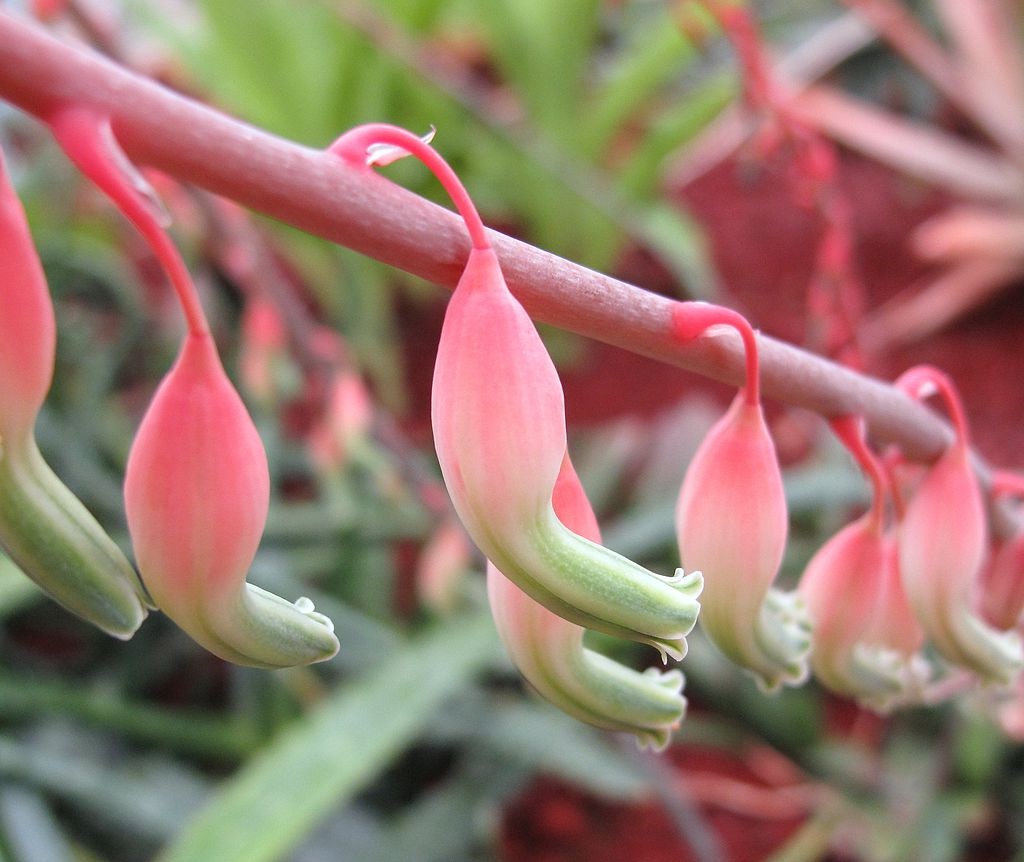
Aloe Vera
Aloe vera is a hugely popular succulent that’s commonly used to help produce natural skincare and beauty solutions. These plants tend to thrive well in the higher hardiness zones across America, with zone 9 and 10 being sweet spots. Fleshy-leaved aloe vera with spikes of yellow flowers are likely to attract the hummingbird with ease.
Although many may confuse these flowers for red hot pokers, which are perfect potted flowers to attract hummingbirds, they are actually a different species.
Like gasteria, aloe vera enjoy a balance of sunlight and shade, and unlike some other succulents, they need a little more TLC when it comes to watering. Drainage is key, and to pay attention to them during droughts.
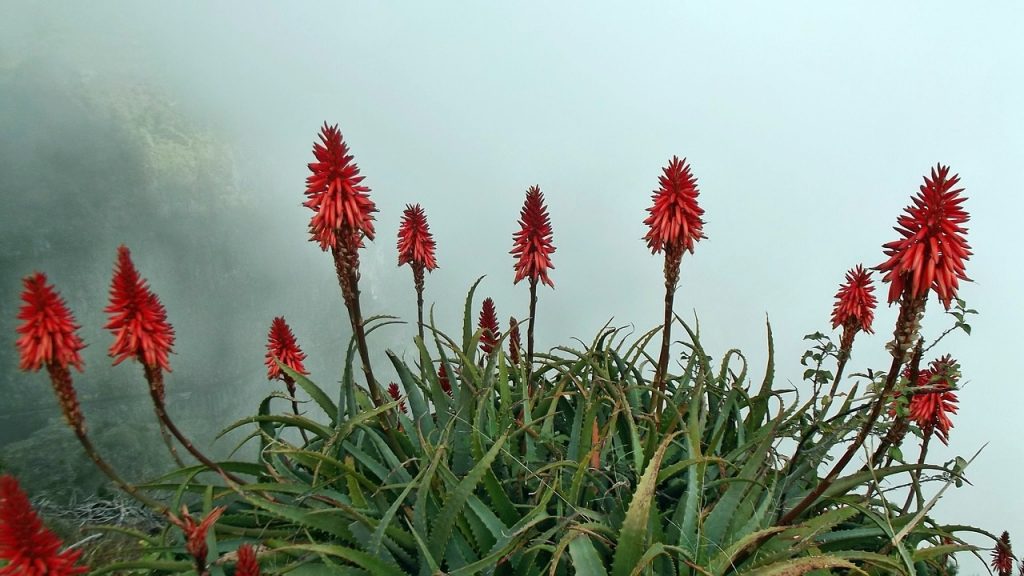
Sinningia
The sinningia is a wonderfully fragrant succulent likely to appeal to hummingbirds fluttering around zones 5, 6 and 7. Despite the plant having a variety of species (the tubiflora, the curtiflora and the aggregata, for example), they are not necessarily so common in US gardens. That may be because they do require a little more patience than your average succulent.
Sinningia produce spectacular flowers in colors of yellow and pink, though you may commonly see white blooms sprout up. The flowers of various sinningia tend to be very long and tube-like. This is ideal for the long-beaked hummingbird, but in some cases, even they may have challenges deriving the nectar from these plants!
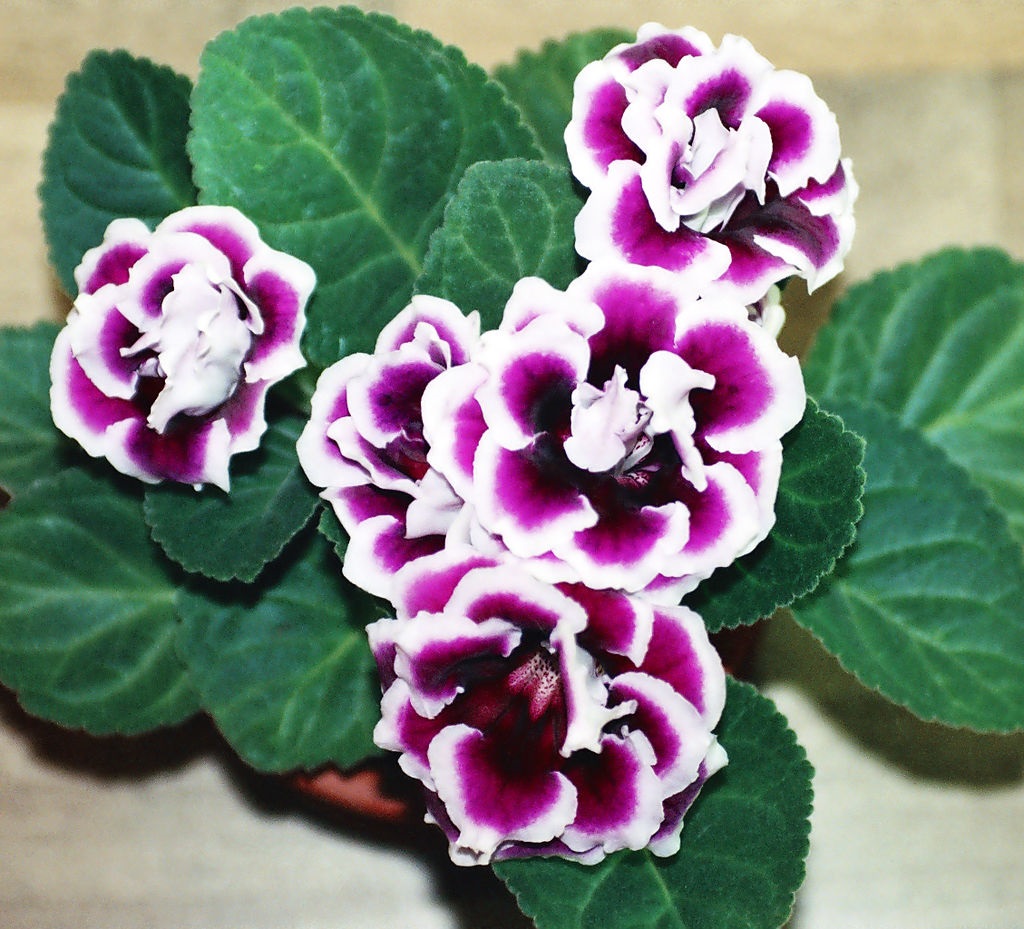
Aeonium
The rosette-sprouting aeonium is a spectacular succulent to behold in the springtime, and in fact, it may even start blooming during the winter. That means you can plant these flowers in preparation for hummingbirds arriving back from their seasonal migration. They’re commonly found in Africa, but will happily grow across hardiness zones 9, 10 and 11.
What’s really interesting about the aeonium is that a flowering plant is a bit of a reward. While it is easy to propagate the aeonium and to keep the succulent growing, you normally won’t see flowers sprout until maturity. That means good things come to those who wait – and for you, that means plenty of eager hummingbirds.
If the aeonium doesn’t appeal to you, there are other perennial flowers that attract hummingbirds.
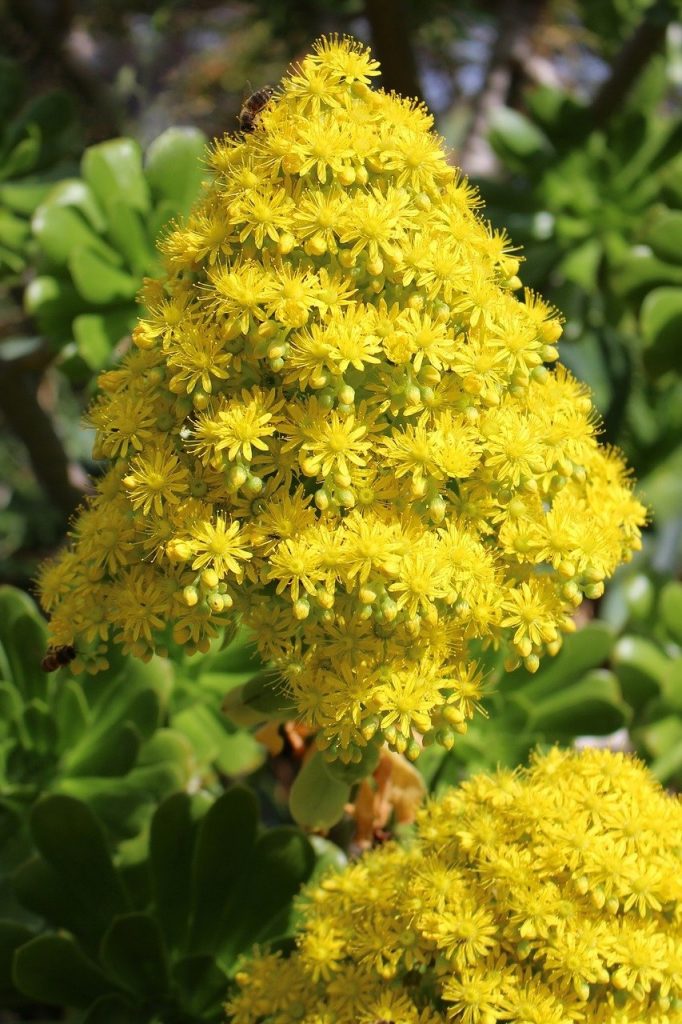
Agave
Agave are, similar to the aeonium, perennial succulents that will reward you with a flower or two if you allow them to grow to maturity. They really can vary in size, too – some will be happy to persist in pots, while others can grow to be 11 or 12 feet tall! These plants will grow across zones 5 through 11 without concern, but catch the flowers while you can – they will never bloom more than once.
The agave is very popular with hummingbirds thanks to their beautiful green and white flowers, and their bell tubes are easy for long-beaked birds to feed from when on a nectar hunt. A word to the wise – while great for hummingbirds, the agave produces sap that can easily poison pets and people alike. Don’t grow agave if you have animals or children likely to come across them in your garden.
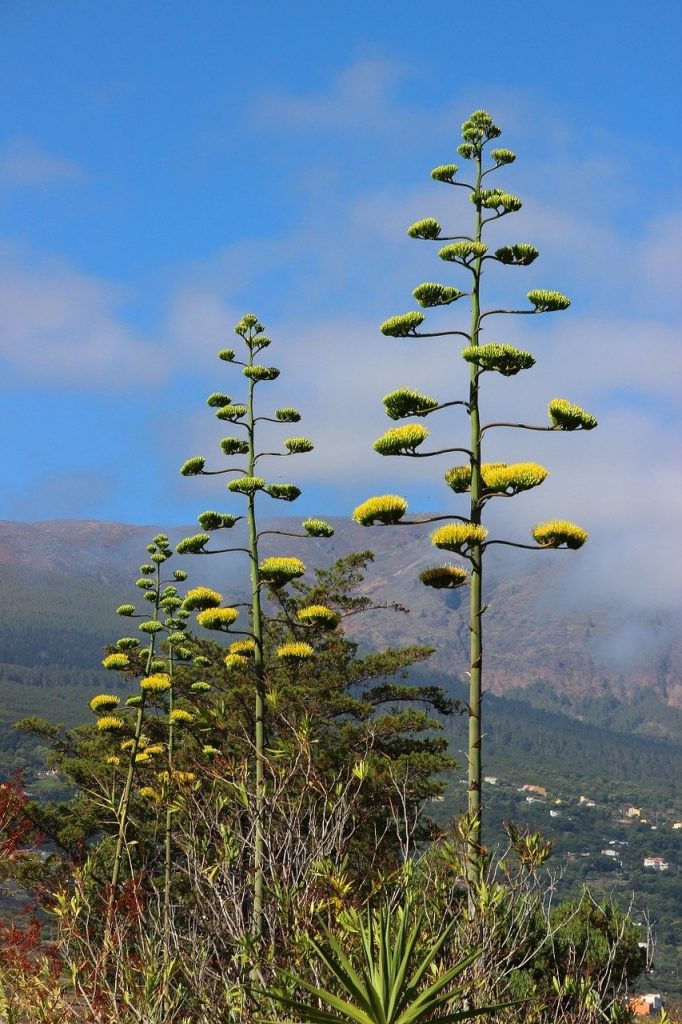
Why should I attract hummingbirds with succulents?
Many people choose to attract wildlife with succulents as a result of their local climate. Succulent plants and flowers persist and propagate well in dry, arid conditions, and while some will only flower once, they offer amazing colors and petal shapes that hummingbirds find hard to resist.
Our advice is to consider a wide variety of options. Why not consider shrubs that attract hummingbirds, too? The hummingbird is a fickle beast in some ways, but when deep flower nectar is on offer, they will always keep coming back for more.
